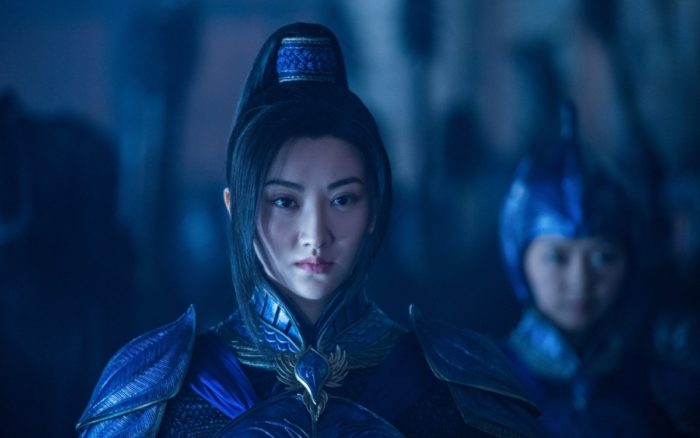YI NING WONG WRITES – Slowly shifting from insulting stereotypes to socially conscious roles, typecasting has changed in recent years. With The Great Wall (2017) marching into its second month in U.S. theaters, whitewashing in mainstream film productions is not the only element of the film that can be examined. A lesser-noticed, yet highly relevant debate point is the implications behind Chinese actress Jing Tian and her portrayal of Commander Lin Mae.
Five-foot, six-inches, beginning her acting career at the mere age of 20, and unarguably attractive, Jing’s physicality almost perfectly fits the Suzie Wong model of becoming an international Chinese star. However, Jing’s portrayal of Commander Lin Mae in this film further indicates that mainstream Chinese actresses have headed in an entirely different direction to find fame and respect.
The Suzie Wong character originated from Richard Quine’s The World of Suzie Wong (1960) starring Hong Kong actress Nancy Kwan. This story of a Chinese prostitute who falls in love with a Western expat has created an “image of Asian womanhood in Western imagination”, one that has also become one of the pioneering works in attributing Chinese women as sex symbol stereotypes of passivity, infantilism, and hypersexuality.
 Moreover, the Suzie Wong character is compatible with the traditional Confucian ideology of a patriarchal social hierarchy, favoring soft, passive and weak qualities in women.
Moreover, the Suzie Wong character is compatible with the traditional Confucian ideology of a patriarchal social hierarchy, favoring soft, passive and weak qualities in women.
It makes sense then, that international roles for Chinese women who meet these physical requirements are also prone to typecasting. However, most renowned Chinese actresses have starred in roles that are anything but subordinate.
Notable actresses and their works include Zhang Ziyi and Michelle Yeoh in Crouching Tiger, Hidden Dragon (2000), Zhao Wei in Shaolin Soccer (2001), and most recently, Jing Tian in The Great Wall (2017).
In the latter film, Lin Mae (Jing’s character) not only develops camaraderie with Matt Damon’s character, William, she even gets promoted to General after saving the day– as opposed to being romantically swooned by the white hero.
However, there is a caveat. The current lack of media portrayal of women as sex symbols could also serve as a problem in itself. Historically, sex symbols such as Marilyn Monroe, Jayne Mansfield, and Brigitte Bardot began women’s slow reclamation of their own sexuality in the sexual awakening era.
In contrast, while there is an attractive appeal in most Chinese actresses, there is an absence of women embracing their sexuality. Although Jing gave an impressive portrayal of a female general, the overt lack of sexual connotation in her performance could be interpreted as a nod to restricting female sexuality rather than empowering it.
This may speak to the idea that China is simply more willing to accept certain changes over others, and that countering the traditional beliefs about women’s sexuality is one that still needs time. Nevertheless, the respectable roles these women have reached in the inustry have marked a remarkable progress.

